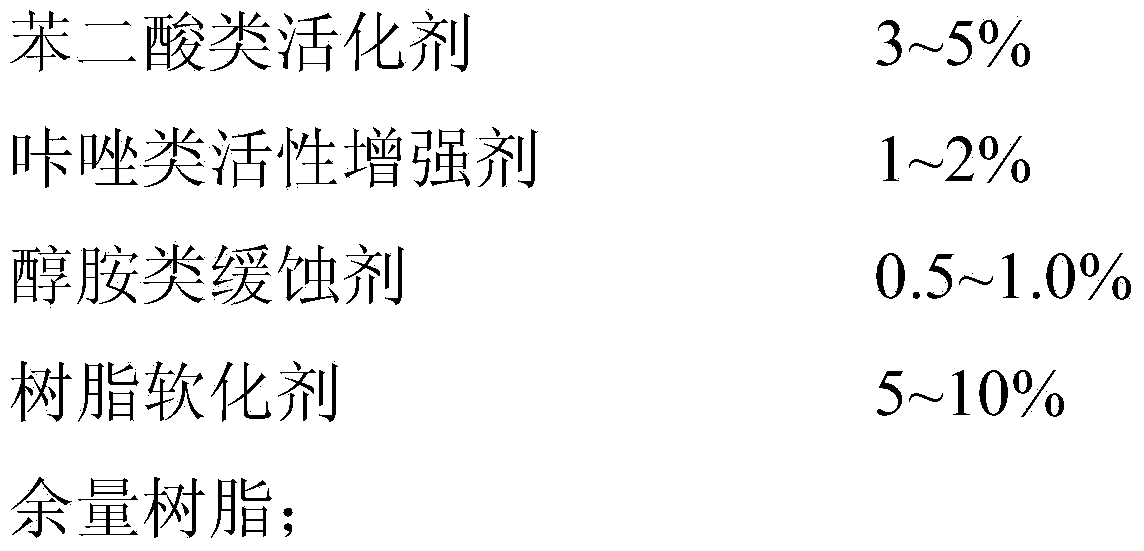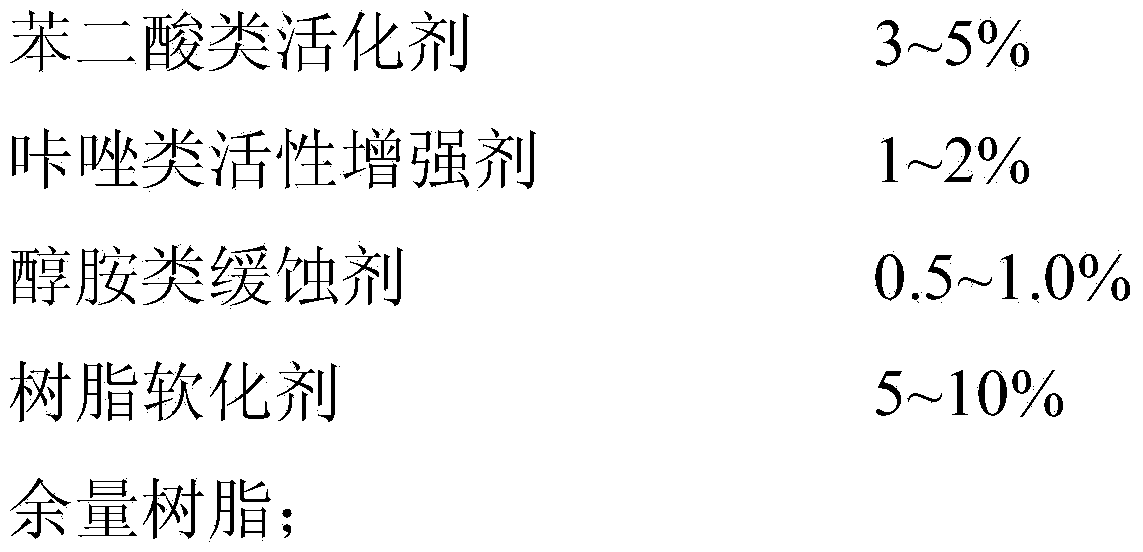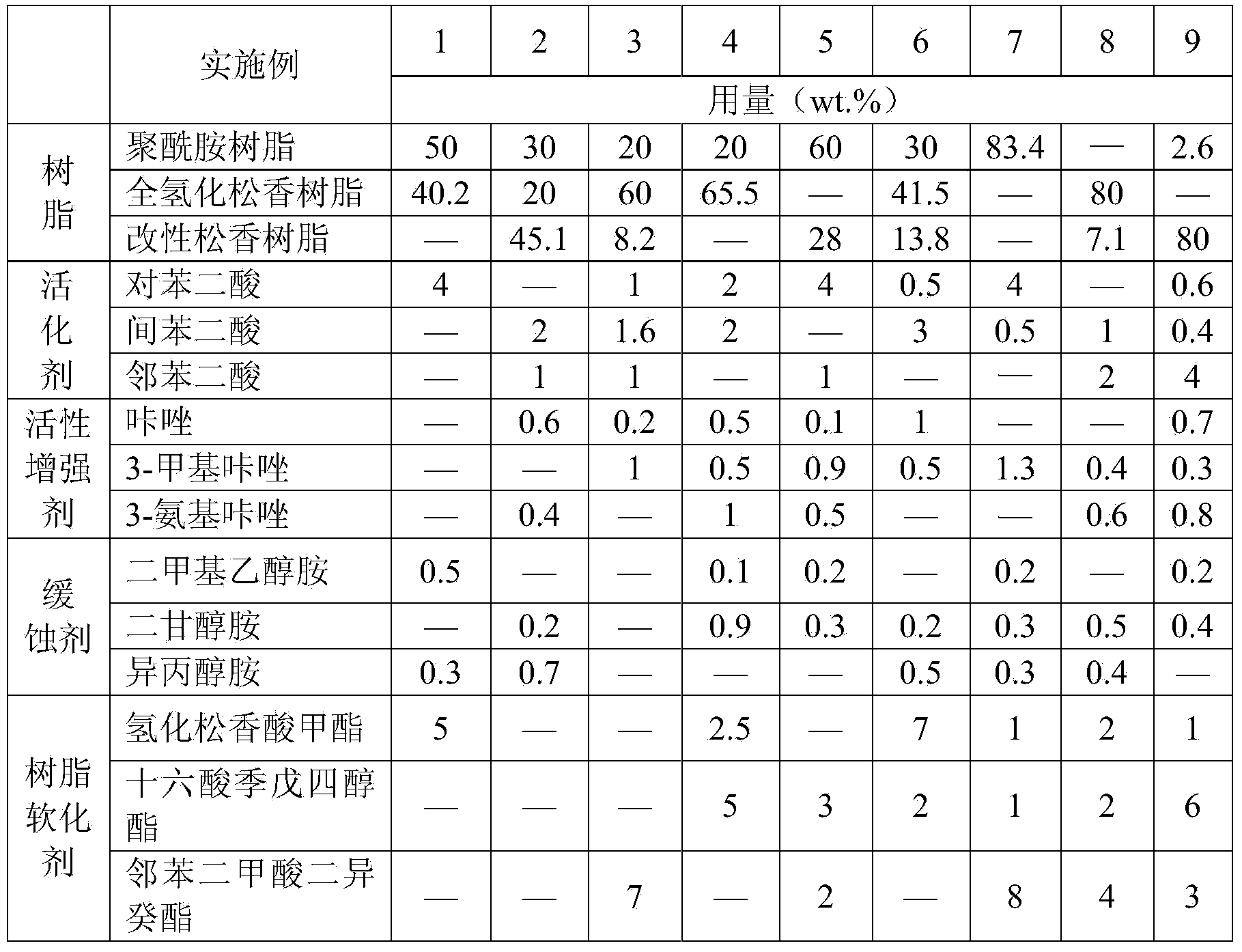Halogenless soldering flux for tin and bismuth low-temperature solder wire and preparation method thereof
A flux and halogen-free technology, applied in welding equipment, welding medium, manufacturing tools, etc., can solve problems such as organic acids or organic halides cannot be effectively volatilized, surface insulation resistance is increased, and solder joint residues are blackened , to achieve improved welding activity, high insulation resistance, and avoid blackening
- Summary
- Abstract
- Description
- Claims
- Application Information
AI Technical Summary
Problems solved by technology
Method used
Image
Examples
Embodiment Construction
[0020] The present invention will be further described in detail below in conjunction with specific embodiments. The specific formula of each embodiment is shown in Table 1, and the content of the flux in the technical solution of the present invention is 1.5-3wt.% in the solder paste, and the metal composition used is 52wt.% and 48wt.%. The soldering flux of the present invention is compared with the commercially available lead-free soldering flux.
[0021] The preparation method of the halogen-free flux for tin-bismuth low-temperature tin wire is carried out according to the ratio in Table 1 with the following steps: (1) add all the resin into the reaction kettle and heat and stir until it is completely melted; Add 3-5wt.% phthalic acid activator and 1-2wt.% carbazole activity enhancer at ℃, stir for 15-30 minutes, make it mix uniformly, and obtain pre-mixture; (3) add to (2) After adding 0.5-1.0wt.% alcohol amine corrosion inhibitor and 5-10wt.% resin softener to the obtai...
PUM
 Login to View More
Login to View More Abstract
Description
Claims
Application Information
 Login to View More
Login to View More - R&D
- Intellectual Property
- Life Sciences
- Materials
- Tech Scout
- Unparalleled Data Quality
- Higher Quality Content
- 60% Fewer Hallucinations
Browse by: Latest US Patents, China's latest patents, Technical Efficacy Thesaurus, Application Domain, Technology Topic, Popular Technical Reports.
© 2025 PatSnap. All rights reserved.Legal|Privacy policy|Modern Slavery Act Transparency Statement|Sitemap|About US| Contact US: help@patsnap.com



